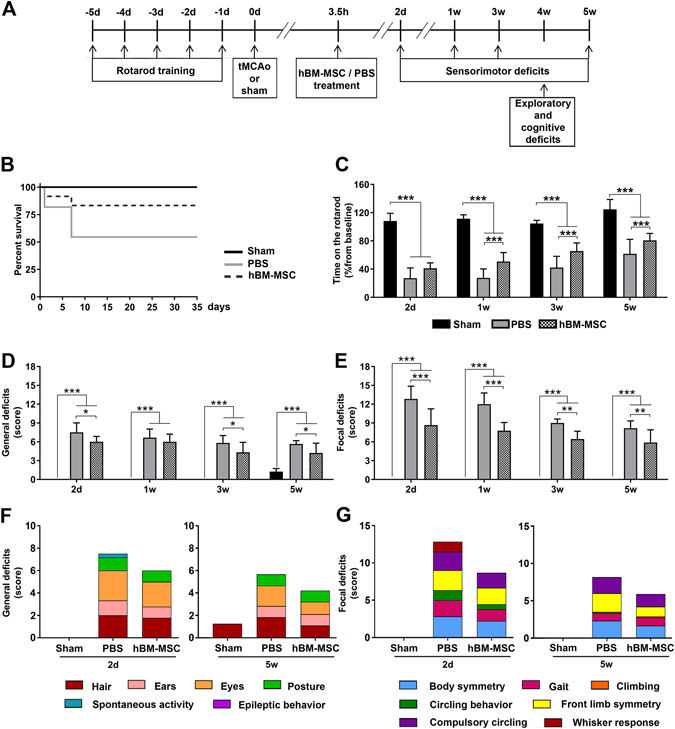Figure 2.

hBM-MSC treatment reduces sensorimotor deficits in stroke mice. (A) Experimental design. Initially mice were trained on the accelerated rotarod daily from −5d to −1d to generate stable baseline values. hBM-MSC were injected intravenously (IV) 3.5 h after tMCAo. Sensorimotor deficits were assessed at 2d, 1w, 3w and 5w. Exploratory and cognitive functions were evaluated at 4w measured by the open field and the novel object recognition (NOR) tests. Mice were sacrificed 5w after tMCAo. (B) Survivals in sham, tMCAo hBM-MSC and tMCAo PBS mice are shown by Kaplan-Meier curves. (C) Latency to fall off the rod was similarly reduced at 2d in both groups of stroke mice. hBM-MSC treatment induced a progressive improvement in the rotarod performance that was significant superior to that of tMCAo PBS mice. (D,E) The neuroscore revealed an increase in general (D) and focal (E) deficits in stroke mice as compared to sham. tMCAo hBM-MSC mice showed better general and focal scores compared to tMCAo PBS mice already at 2d, and this difference persisted throughout the observation period. The contribution of each individual parameter on general (F) and focal deficits (G) in tMCAo hBM-MSC and tMCAo PBS mice for the earliest (2d) and latest (5w) evaluation is shown. Data are mean + SD, n = 6–10, (B) Log-rank (Mantel-Cox) test p = 0.06. (C) Two-way ANOVA for RM ptreatment < 0.0001, ptime < 0.0001, pinteraction < 0.0001; (D) Two-way ANOVA for RM ptreatment < 0.0001, ptime < 0.0001, pinteraction < 0.0001. (E) Two-way ANOVA for RM ptreatment < 0.0001, ptime < 0.0001, pinteraction < 0.0001. Tukey’s post-hoc test: *p < 0.05, **p < 0.01, ***p < 0.001.
